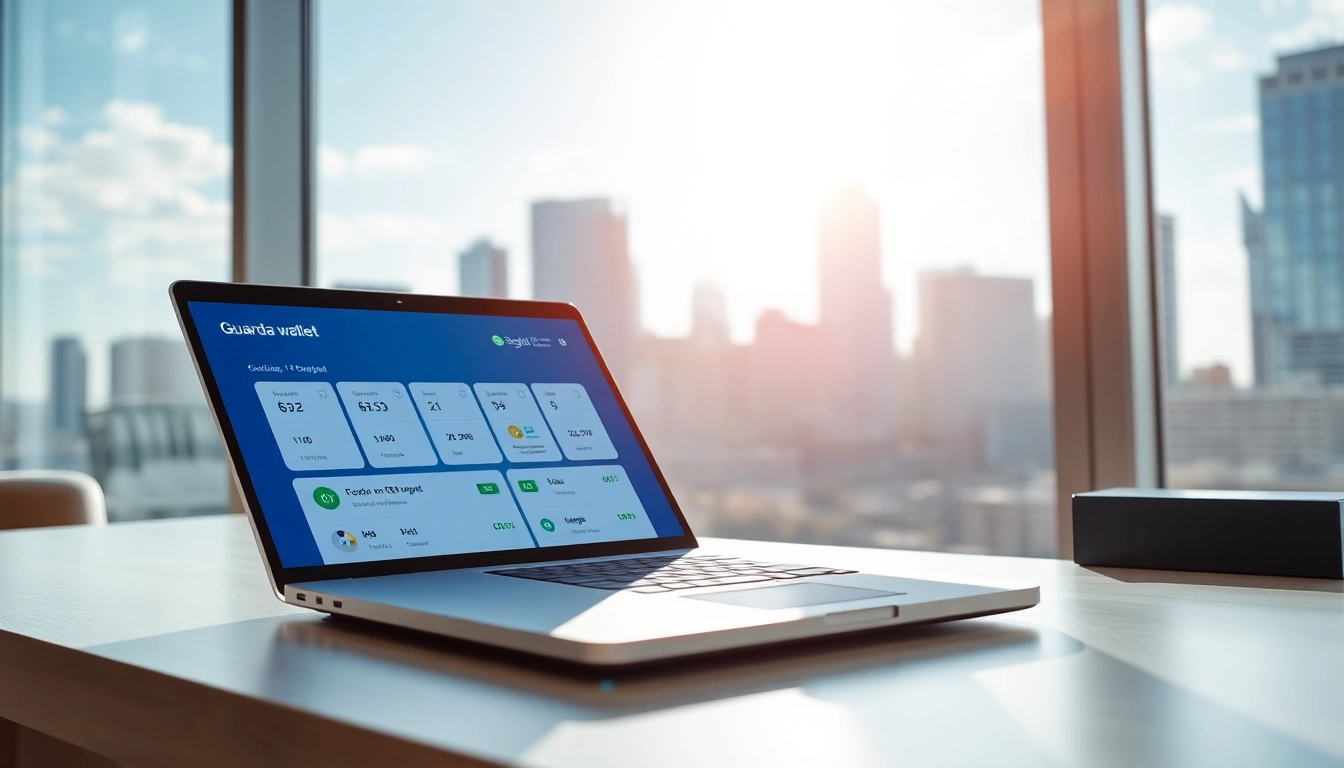Understanding the Exodus Wallet: A Comprehensive Overview
The exodus wallet has gained tremendous popularity in the cryptocurrency community due to its user-friendly design and extensive features. This digital wallet allows users to safely store, manage, buy, and exchange a wide array of cryptocurrencies and digital assets all in one place. In this article, we will explore the key aspects of the Exodus Wallet, how to set it up, its security measures, user experience, and tips to optimize its use, making it a valuable resource for both novices and experienced cryptocurrency enthusiasts alike.
What is the Exodus Wallet?
Exodus is a versatile cryptocurrency wallet designed to simplify the management of digital assets. Launched in 2015, it has been recognized for its clean interface and innovative functionalities. Unlike traditional wallets that function solely as storage, Exodus is a hot wallet that provides integrated trading capabilities, allowing users to buy, sell, swap, and manage over 100 cryptocurrencies seamlessly. Its multichain feature further enhances its capabilities, ensuring users have access to various blockchain networks.
Key Features of the Exodus Wallet
- User-Friendly Interface: Exodus boasts an intuitive design that caters to both beginners and seasoned users, with easy navigation and detailed asset overviews.
- Built-in Exchange: Users can directly trade over 100 cryptocurrencies without leaving the app, streamlining the trading process.
- Multi-Platform Availability: The wallet is accessible on desktop and mobile devices, enabling users to manage their assets on-the-go.
- Custodial and Non-Custodial Options: While users have control over their private keys, Exodus offers integrated exchanges that are custodial in nature, allowing for ease of access.
- Portfolio Tracking: The wallet provides insightful analytics and portfolio management tools, offering users visibility into their holdings and transaction history.
- Decentralized Finance (DeFi) Access: The Exodus Wallet integrates with various DeFi platforms, positioning it as a versatile tool for users interested in earning passive income from their crypto holdings.
Comparing Exodus Wallet with Other Crypto Wallets
When evaluated against other wallets like Coinbase, Ledger, and Trust Wallet, Exodus stands out for its aesthetics and functionality. While wallets like Ledger are hardware-based and provide superior security, Exodus combines ease of use with trading features not typically found in hardware wallets. Conversely, platforms like Coinbase are known for their registration requirements and centralized control, making Exodus a more attractive option for those seeking a balance between usability and control over their assets.
Setting Up Your Exodus Wallet: Step-by-Step Instructions
How to Download and Install Exodus Wallet
Setting up the Exodus Wallet is simple and straightforward. Follow these steps:
- Download the Wallet: Visit the official Exodus website or your app store (Google Play or Apple Store) and download the Exodus Wallet app suitable for your device.
- Install the Application: Once downloaded, follow the installation prompts. Make sure to enable any permissions requested to optimize functionality.
- Set Up Preferences: Open the app and tailor your settings based on your preferences — security settings, notifications, and appearances.
Creating Your Exodus Wallet Account
Upon installing the app, creating an account is the next essential step:
- Launch the App: Open the Exodus wallet application. You will be greeted with a welcome message.
- Backup Your Wallet: The app will prompt you to back up your wallet using the recovery phrase. Write down this phrase and store it securely as it is crucial for recovery purposes.
- Set Up Security Features: Enable biometric logins or PIN protection for enhanced security.
- Explore the Dashboard: Familiarize yourself with your wallet’s interface and functionalities.
Security Measures for Your Exodus Wallet
Security is paramount when managing digital assets. The Exodus Wallet deploys multiple layers of security including:
- The recovery phrase, crucial for both privacy and recovery.
- Biometric authentication options for mobile devices.
- Two-factor authentication for added protection during sensitive transactions.
- Regular software updates to patch potential vulnerabilities.
Using the Exodus Wallet: A User’s Perspective
Buying and Selling Cryptocurrencies with Exodus
Exodus makes buying and selling cryptocurrencies easy. Users can convert fiat currency to crypto or conduct trades among different cryptocurrencies directly through the app. The process typically involves:
- Selecting Your Asset: Choose the cryptocurrency you wish to buy or sell from the available assets.
- Choosing Payment Method: Decide between options such as credit card or bank transfer.
- Finalizing the Transaction: Follow the prompts to complete your transaction, making sure to verify all details before confirming.
How to Swap and Exchange Currencies
Swapping currencies is one of the wallet’s standout features:
- Select the ‘Swap’ Option: Navigate to the swap section within the app.
- Choose Your Currencies: Select the cryptocurrencies you wish to exchange.
- Review and Confirm: Check the exchange rates and transaction fees before confirming the swap.
Maximizing Your Experience: Wallet Functionalities
Exodus offers several advanced functionalities that can enhance the user experience:
- Portfolio Management: Track your assets and their current value over time.
- Staking Options: Earn passive income by staking supported cryptocurrencies directly in your wallet.
- Built-in Knowledge Base: Access educational resources and articles to better understand cryptocurrency markets and blockchain fundamentals.
Safety Considerations: Is Exodus Wallet Secure?
Examining Security Protocols of the Exodus Wallet
Exodus incorporates several protocols to enhance security, including encryption of private keys and recovery phrases directly on the user’s device, ensuring that sensitive information never leaves your wallet. Moreover, since it is a non-custodial wallet, users maintain full control over their private keys, reducing the risks associated with centralized exchanges.
Common Issues and Risks Associated with Exodus Wallet
While the Exodus Wallet is generally secure, users should be aware of common issues:
- Phishing attacks: Fraudsters may attempt to gain access to your wallet via fake websites or emails.
- Loss of Recovery Phrase: Losing access to your recovery phrase can lead to permanent loss of assets.
- Updates Security Awareness: As the crypto landscape evolves, users must remain informed about emerging threats.
Community Feedback: What Users are Saying
Exodus users often express satisfaction with its usability and features. On platforms like Reddit, many users find it preferable as a hot wallet due to its ease of use compared to hardware wallets. However, concerns about fees and hacks have been noted, highlighting the importance of user vigilance and knowledge in managing crypto assets.
Expert Tips for Optimizing Your Use of the Exodus Wallet
Best Practices for Managing Your Crypto Assets
When using Exodus for cryptocurrency management, consider the following best practices:
- Regular Backups: Continuously back up your wallet by storing recovery phrases securely.
- Monitoring Transactions: Regularly review your transactions to ensure no unauthorized activity occurs.
- Diversify Holdings: Avoid holding all assets in one wallet to mitigate potential losses.
Advanced Features You Should Explore
Some advanced features that can further enhance your experience with the Exodus Wallet include:
- Customizable Fees: Adjust fees based on network traffic to optimize your transaction speeds and costs.
- Inter-wallet Transactions: Utilize the wallet’s functionality to manage transfers between multiple wallets effectively.
- Future Updates: Stay informed on upcoming updates that may provide new tools and features.
Performance Metrics: Evaluating Your Exodus Wallet Experience
To ensure you are getting the most out of your Exodus Wallet experience, consider tracking these performance metrics:
- Transaction speeds: Measure how fast your transactions are being processed.
- Fees incurred: Evaluate the costs associated with trading and exchanging.
- Portfolio performance: Regularly assess how well your assets are performing over time.








Leave a Reply